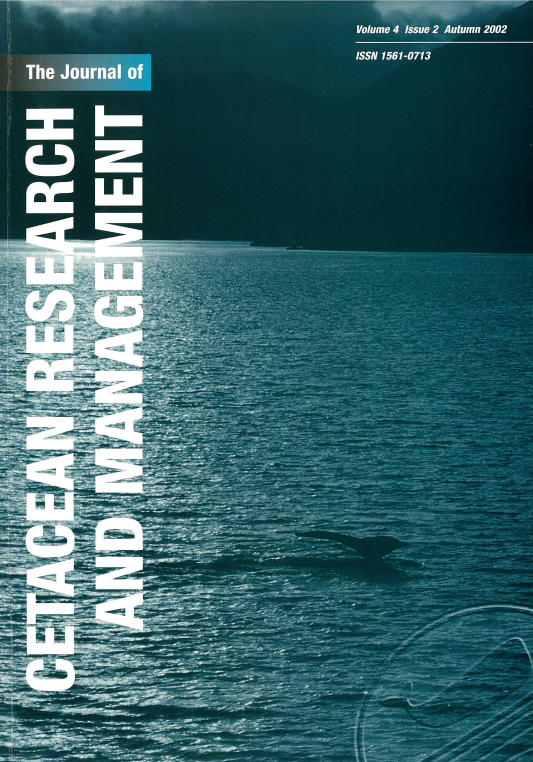Evaluation of nutritive condition and reproductive status of migrating gray whales (Eschrichtius robustus) based on analysis of photogrammetric data
Main Article Content
Abstract
Vertical aerial photographs were collected of gray whales migrating along the California Coast between 1994 and 1998 to readdress some published findings on the biology and life history of this population based on examination of specimens. For each whale, an attempt was made to measure standard total length, the width of the whale at its widest point, the distance from the tip of the rostrum to the widest point, and the width of the flukes. For southbound gray whales, early migrants were longer on average and more likely to be parturient than those migrating later. Near-term pregnant females were wider relative to their length than other southbound gray whales. This difference was easily detected by visual inspection of the images and through statistical evaluation of length and width data. There was 100% agreement between identification of parturient females based on linear regression analysis of length and width and discriminate analysis of all measurements. Based on the proportion of parturient females to those with calves during sampling of southbound whales, the median calving date was estimated to be 13 January. Southbound calves averaged 4.6m in length; those photographed northbound in late April, at an age of about three months, averaged 7.1m. Average length for yearlings, based on combined southbound and northbound data, was 8.5m. Residuals from a regression of width on length were compared, and significant changes in the relationship were detected which were consistent with changes in nutritive condition or fatness described from examination of whales taken along the California Coast between 1959 and 1969 (Rice and Wolman, 1971). Parturient females were the widest relative to their length and northbound cows with calves were the narrowest in the sample. The relationship between length and width for migrating gray whales that were not parturient or associated with a calf, showed that southbound gray whales were significantly wider than northbound whales photographed approximately 60 days later. These results indicate that the predictable but relatively small changes in condition or fatness of gray whales associated with fasting during their winter migration can be reliably detected in measurements from vertical aerial photographs.
Article Details

This work is licensed under a Creative Commons Attribution-NonCommercial 4.0 International License.
You are free to:
- Share copy and redistribute the material in any medium or format
- Adapt remix, transform, and build upon the material
- The licensor cannot revoke these freedoms as long as you follow the license terms.
Under the following terms:
- Attribution You must give appropriate credit, provide a link to the license, and indicate if changes were made. You may do so in any reasonable manner, but not in any way that suggests the licensor endorses you or your use.
- NonCommercial You may not use the material for commercial purposes.
- No additional restrictions You may not apply legal terms or technological measures that legally restrict others from doing anything the license permits.

